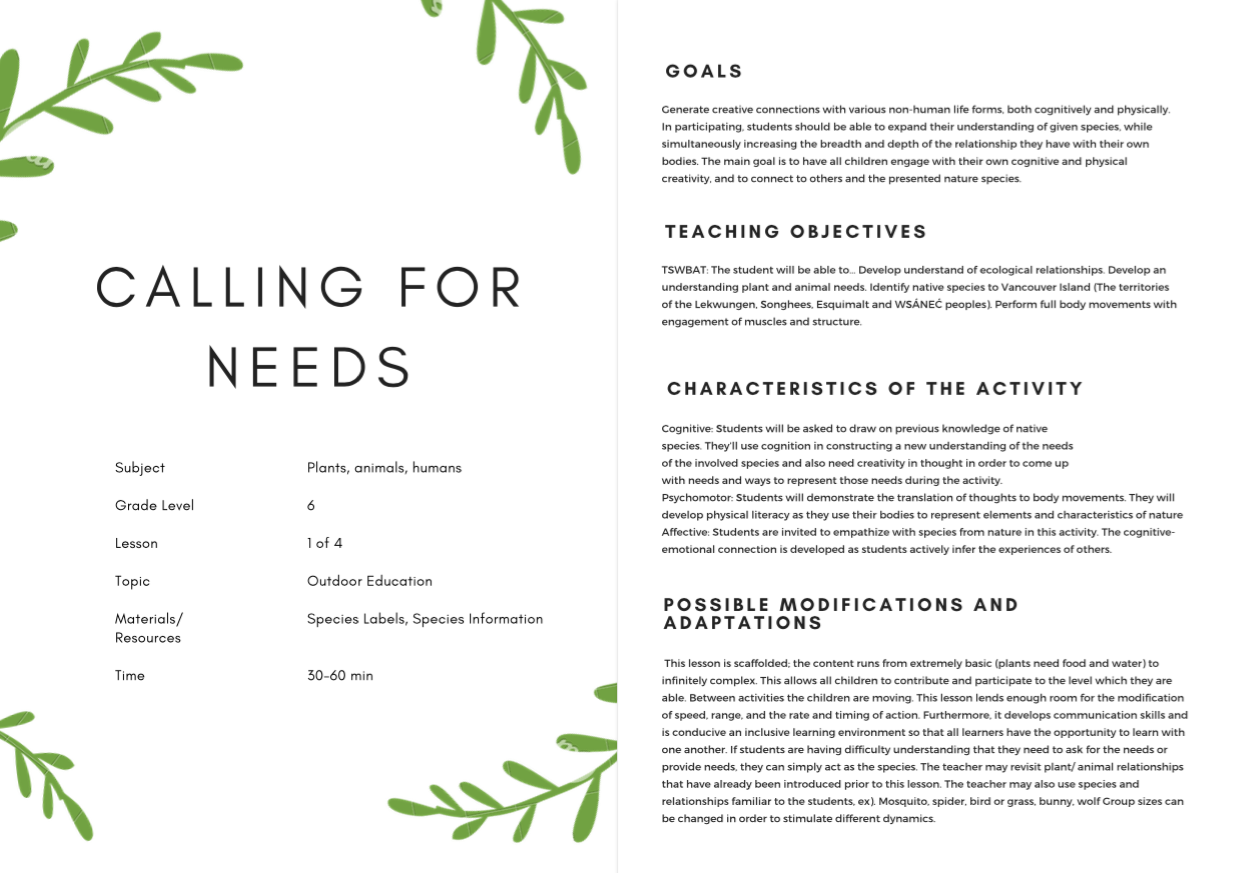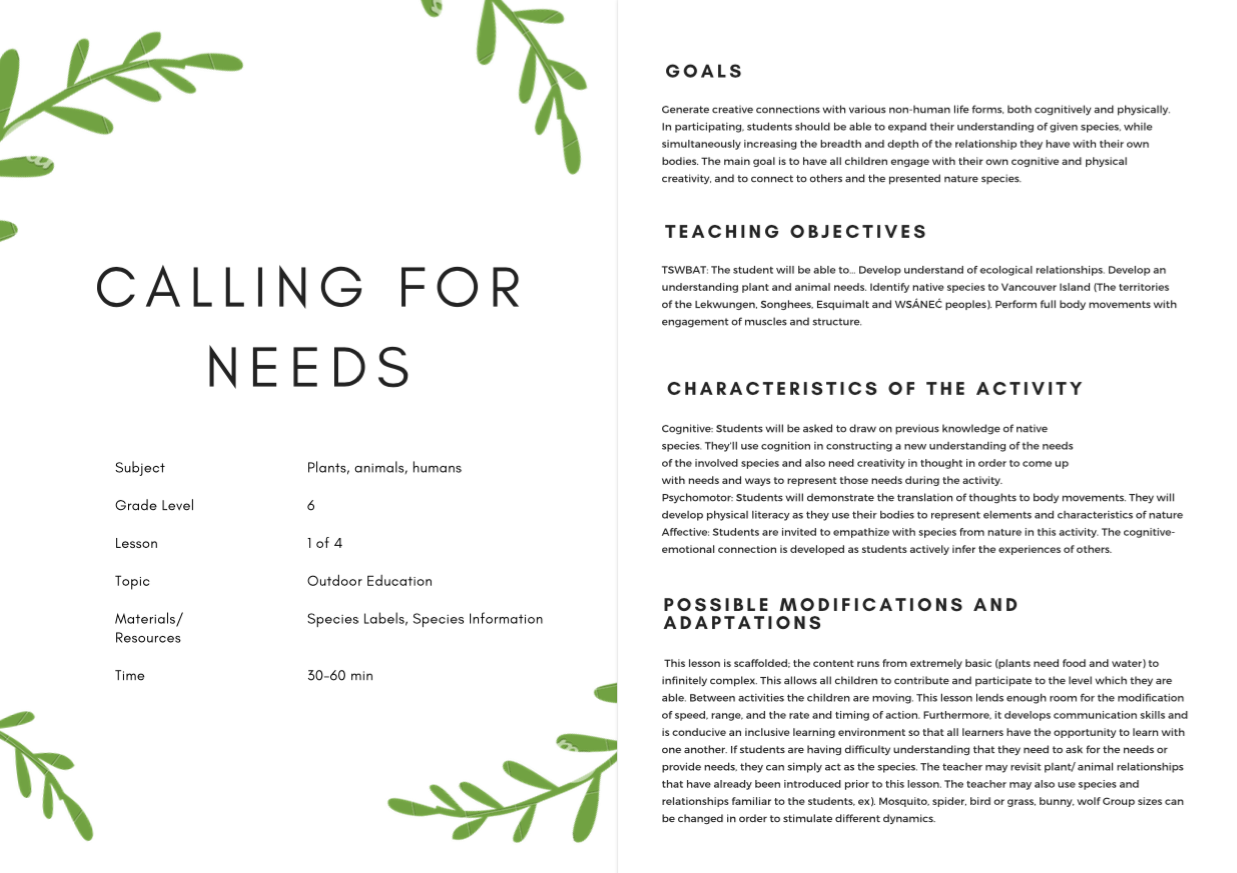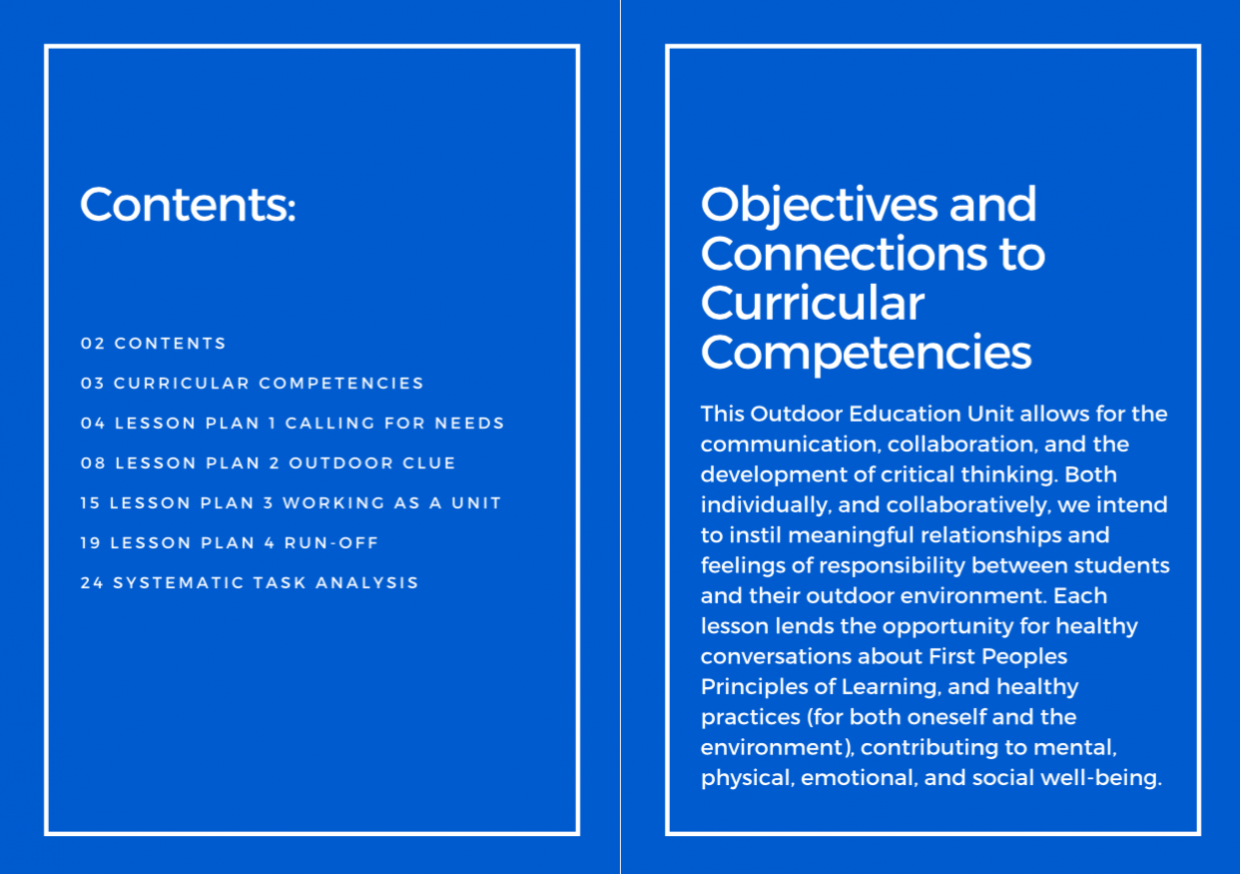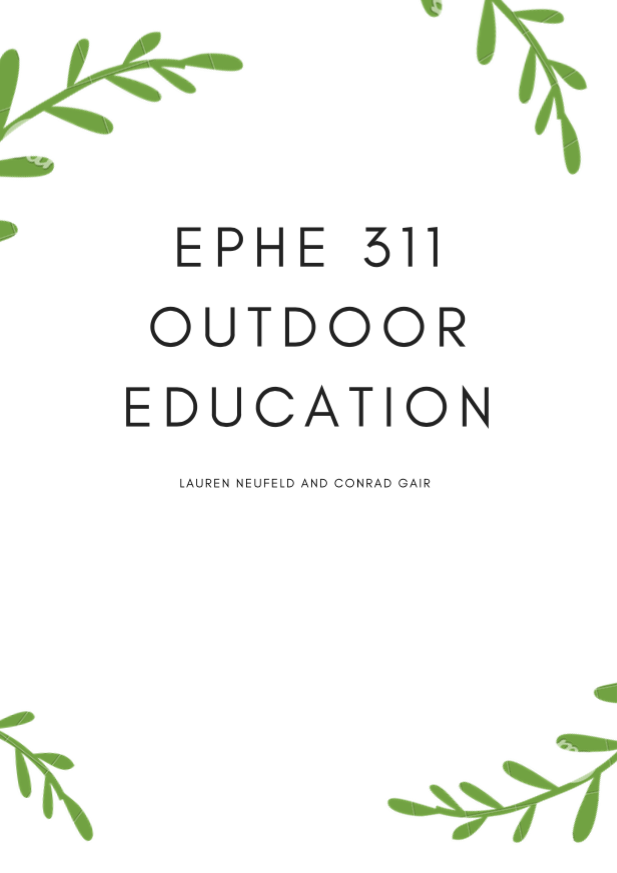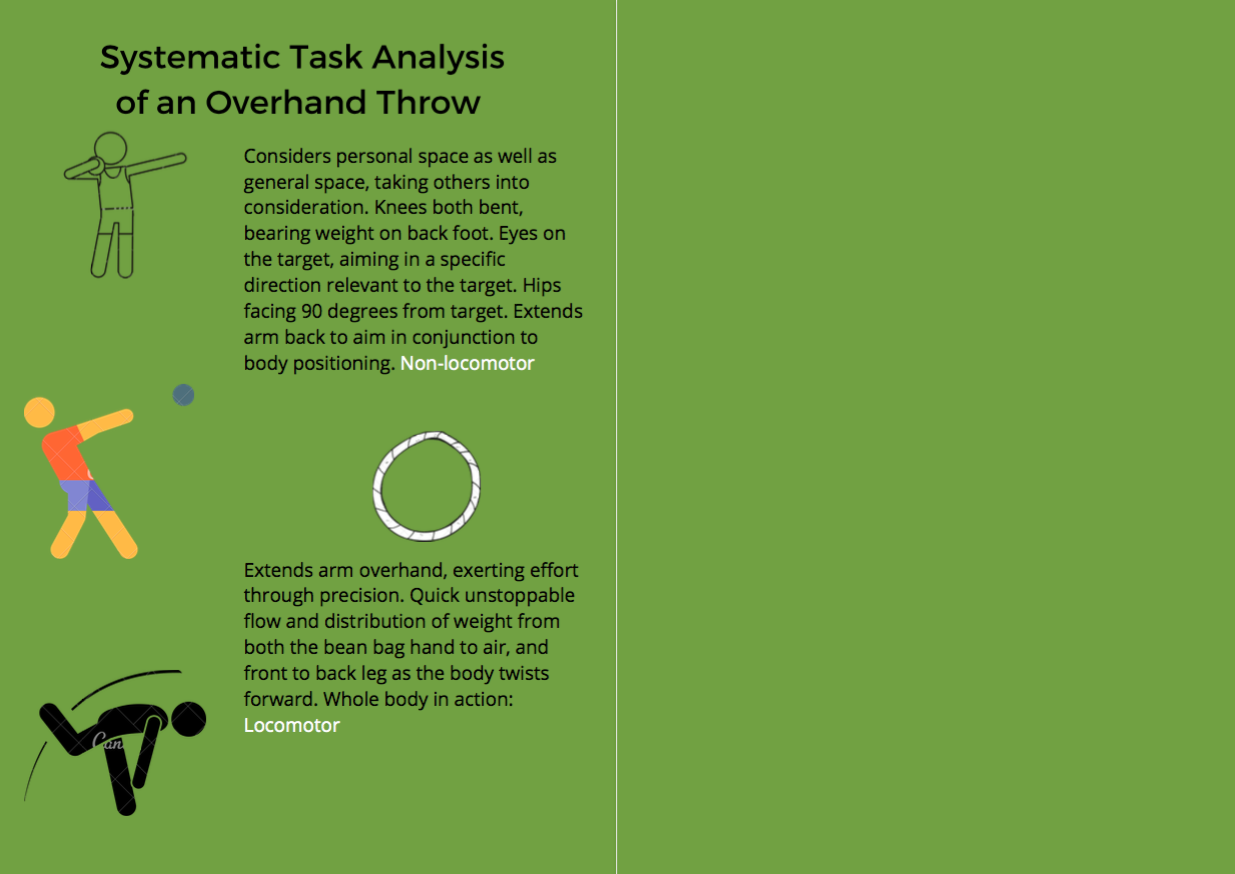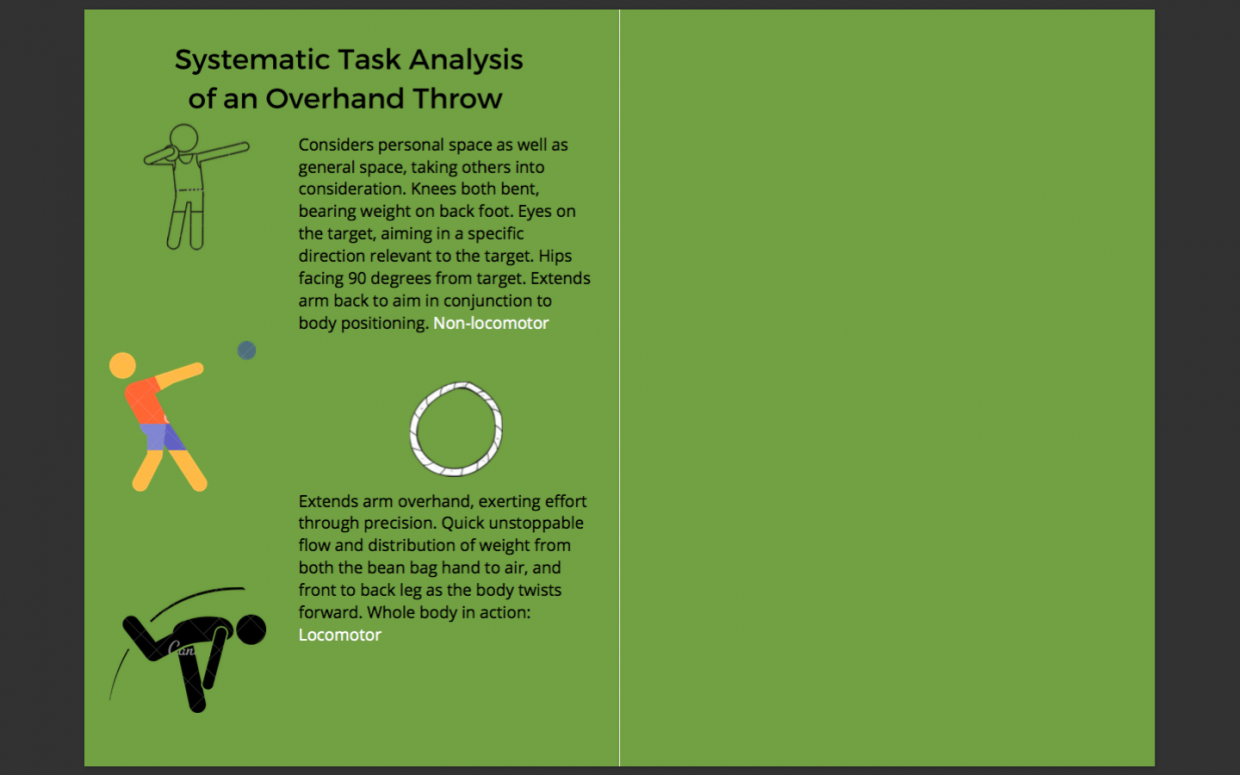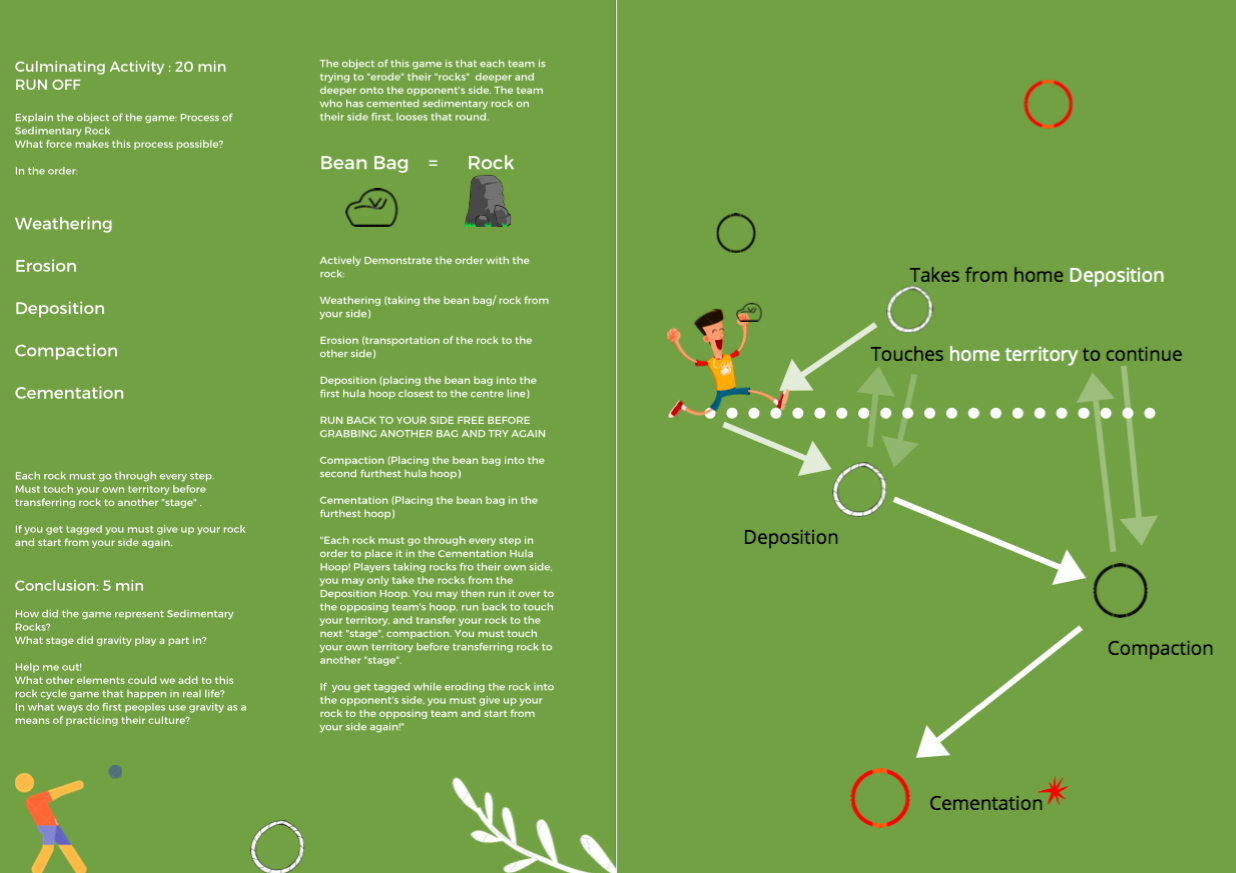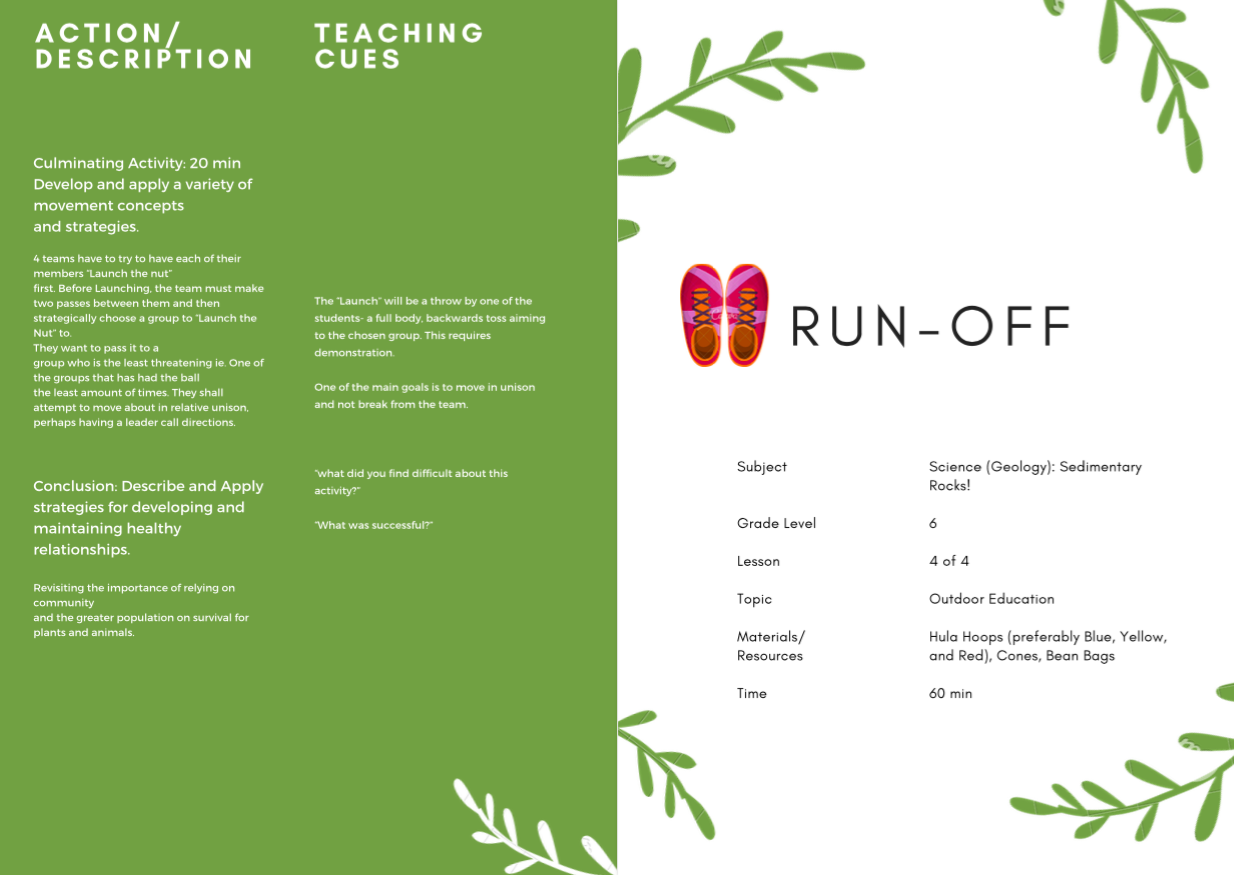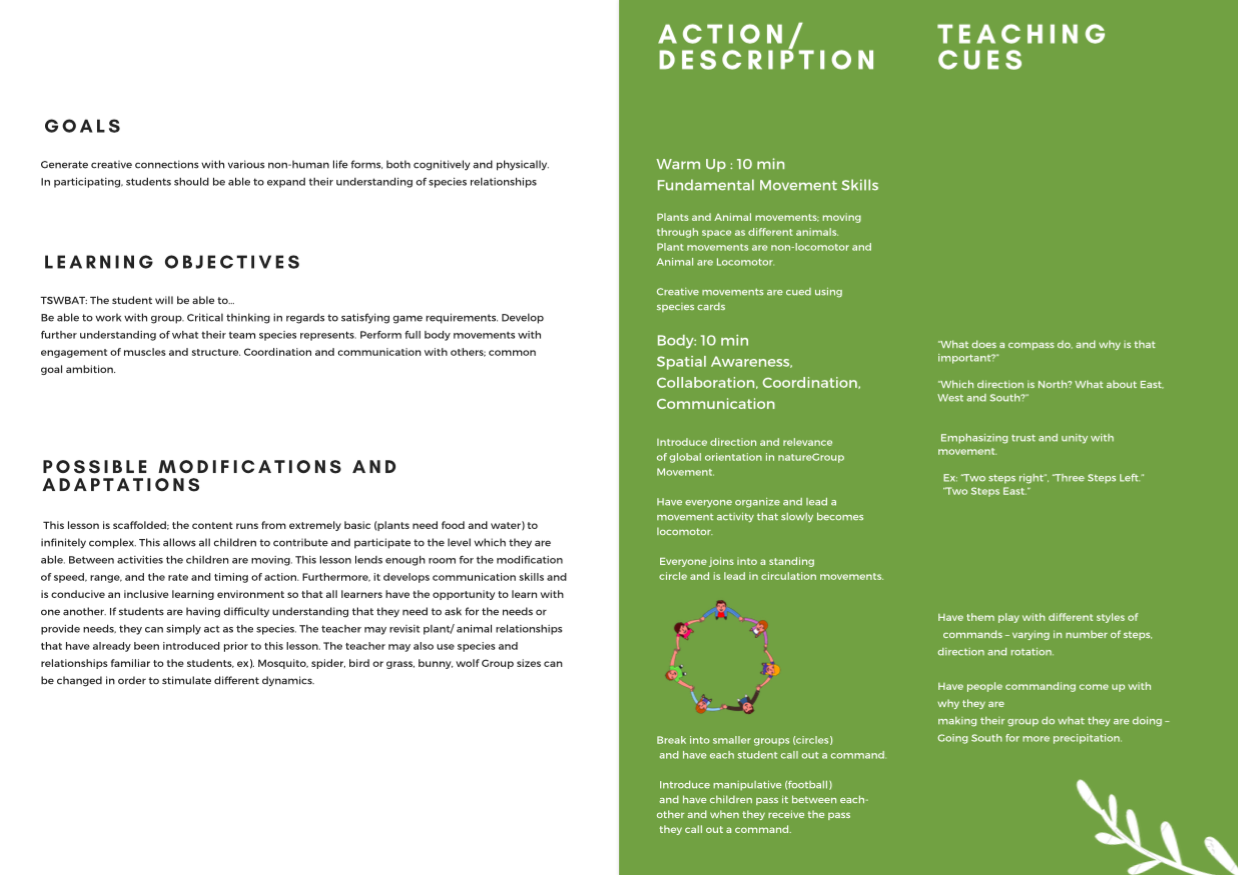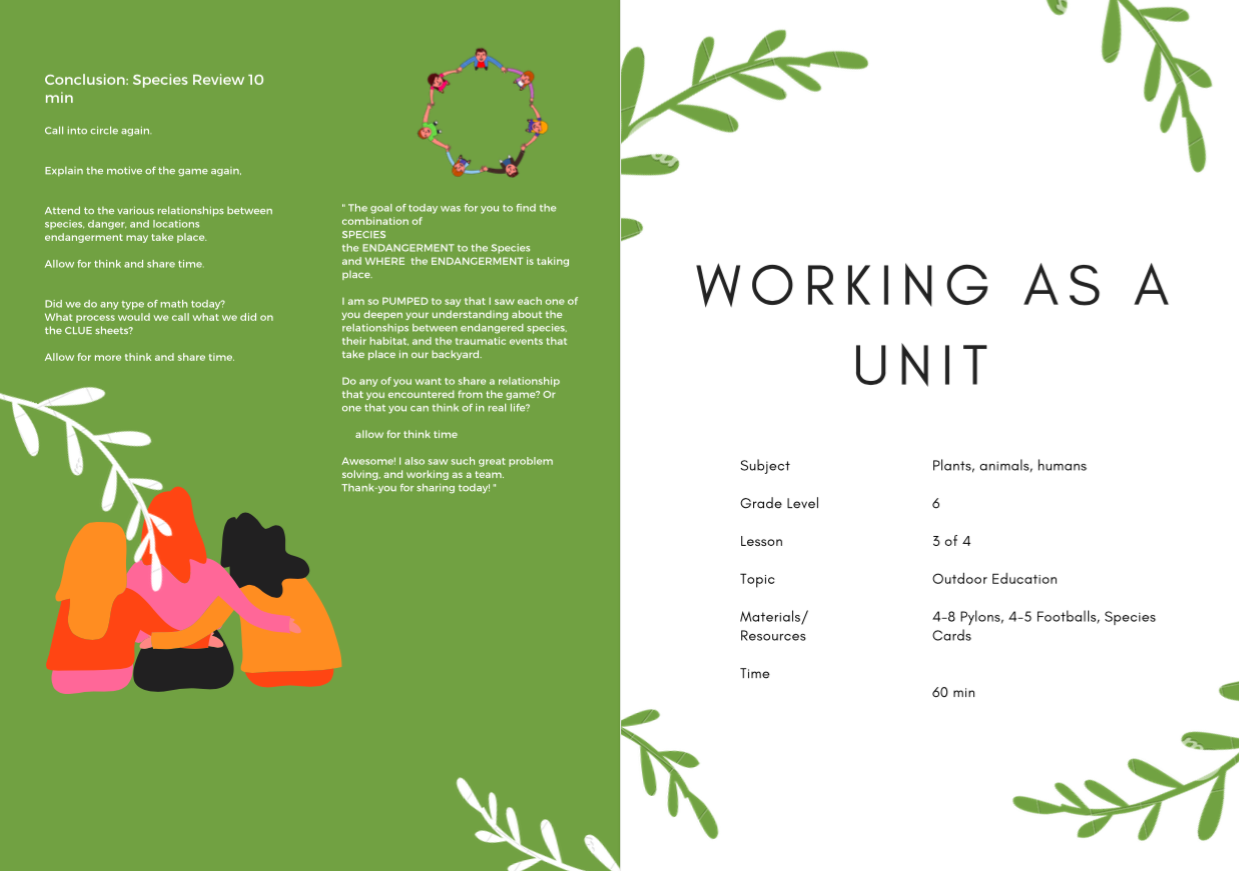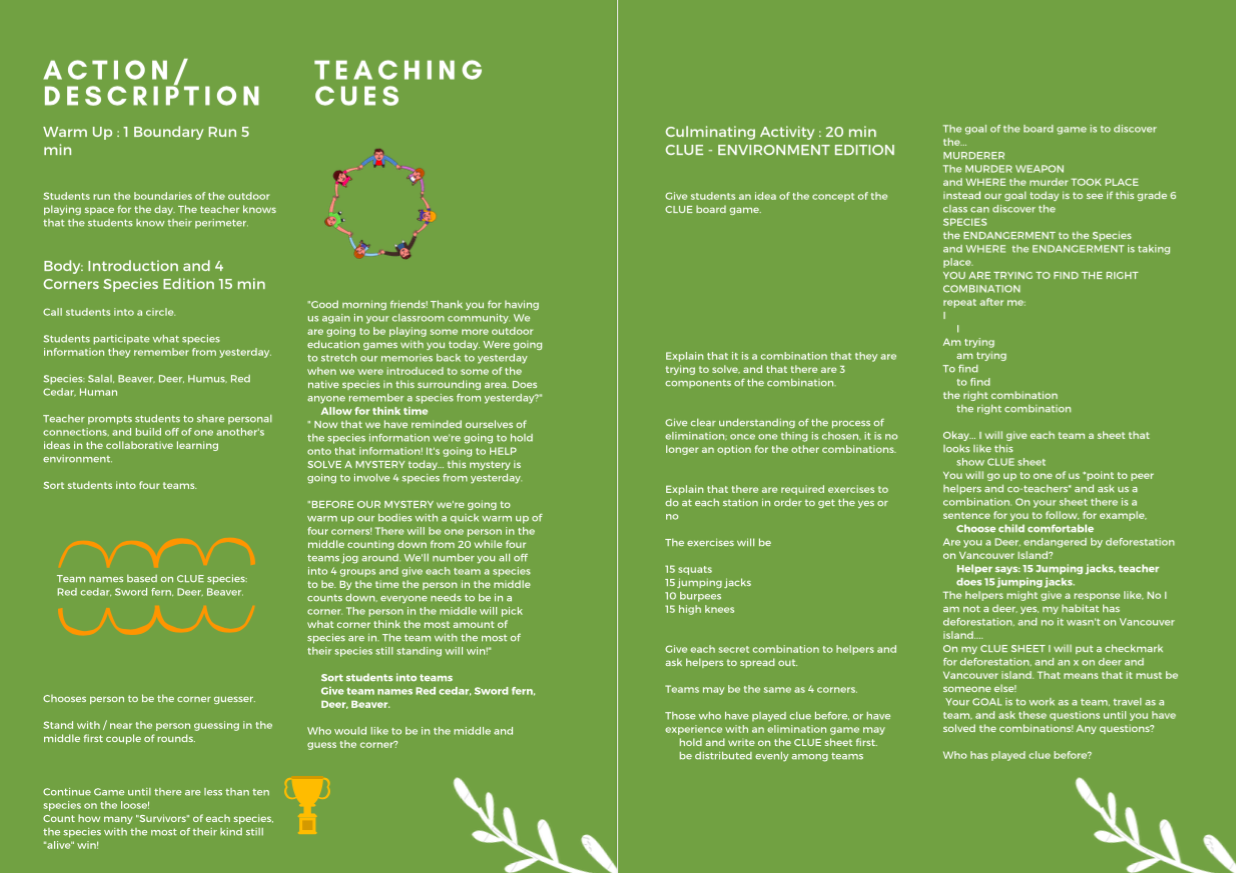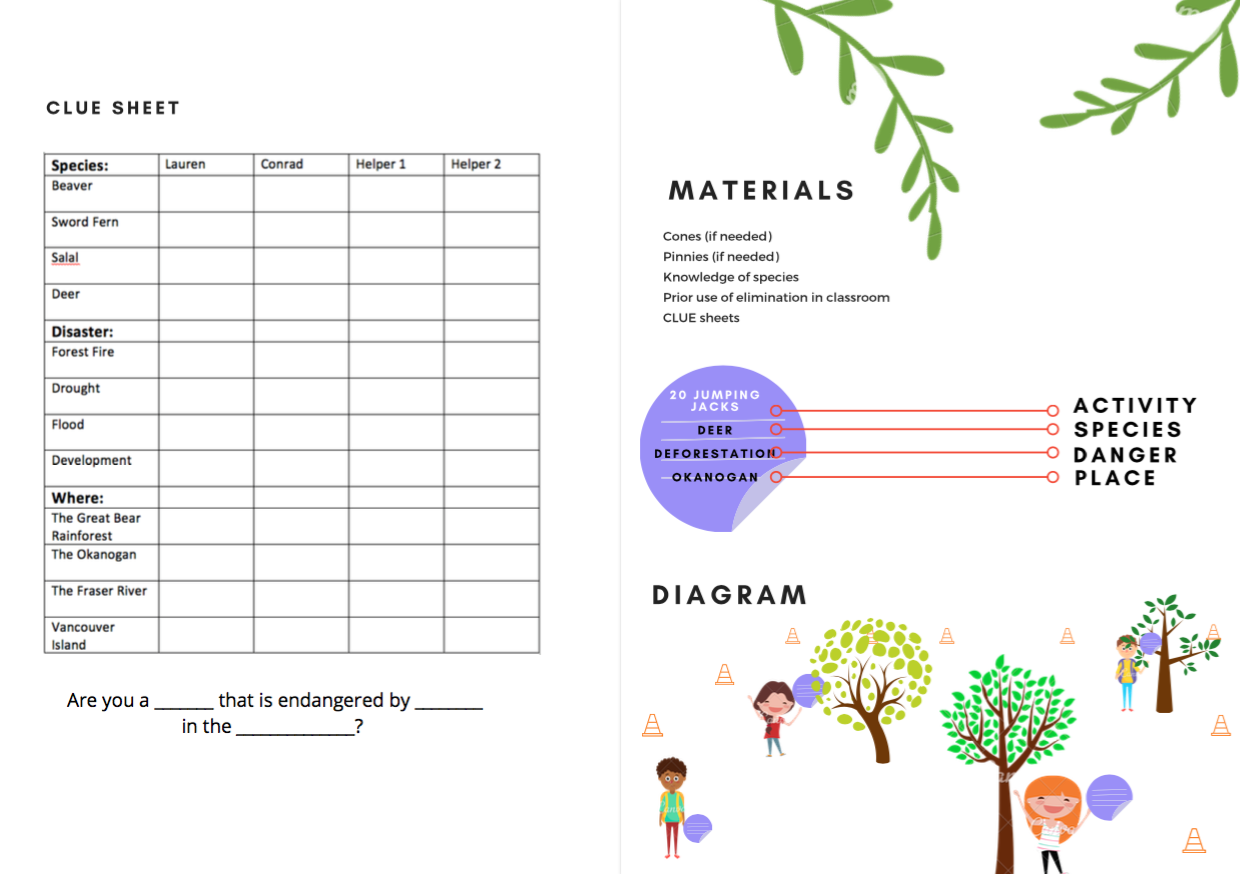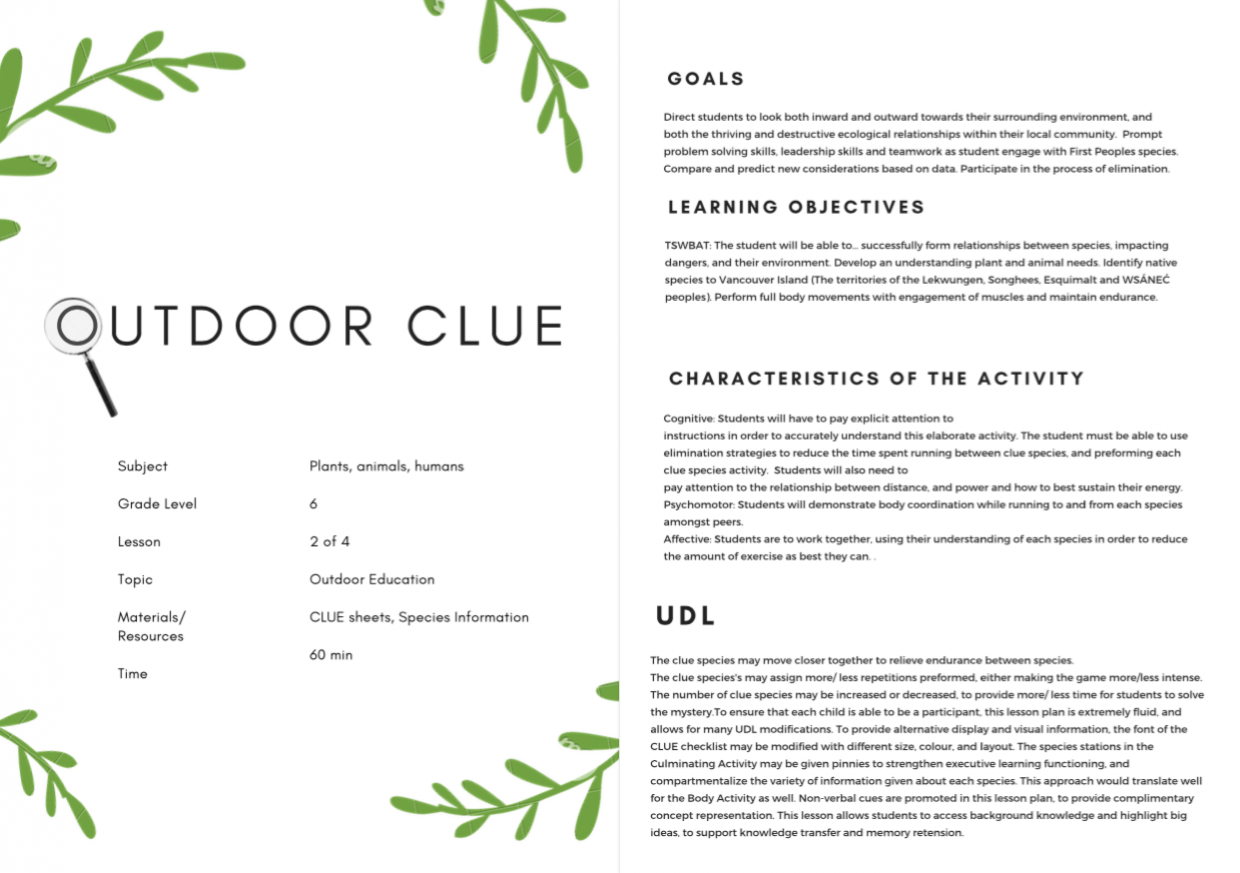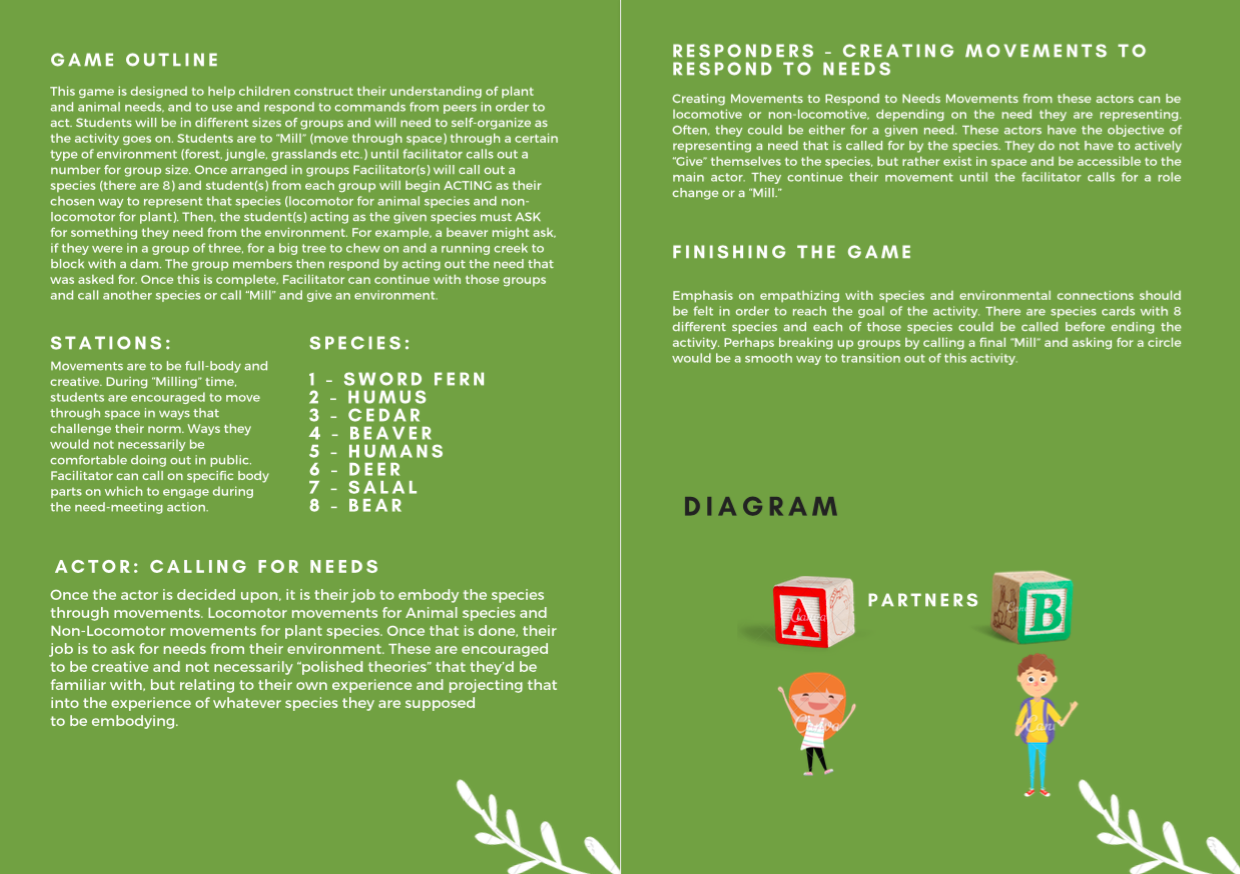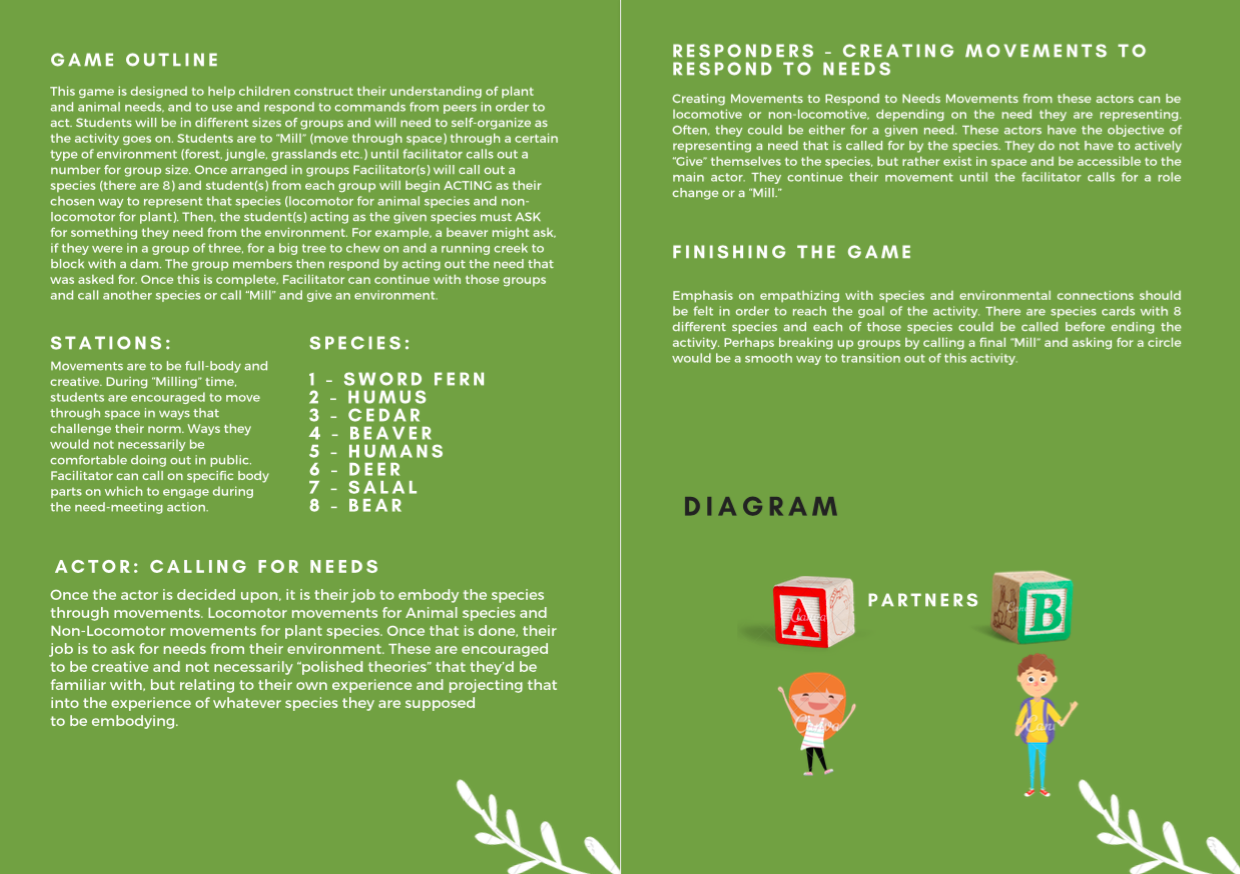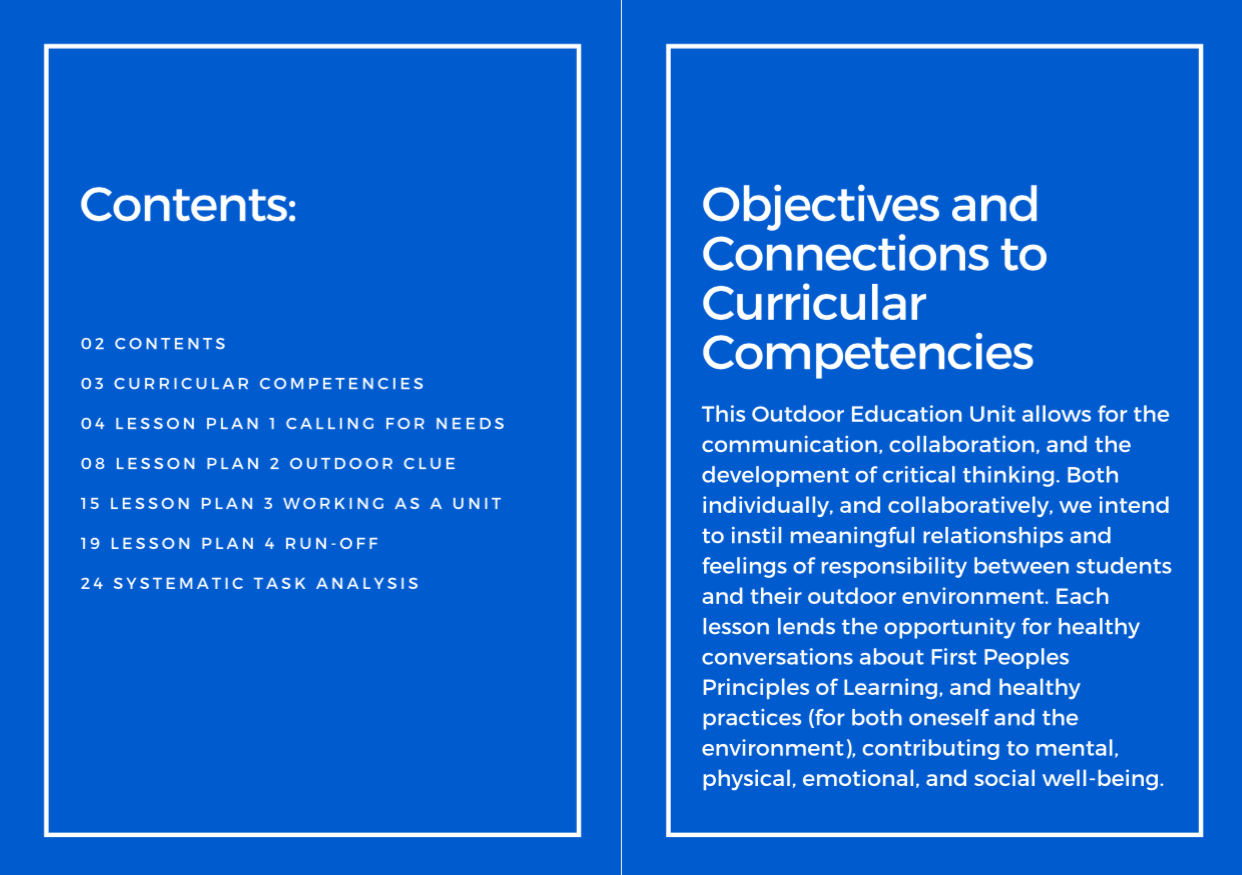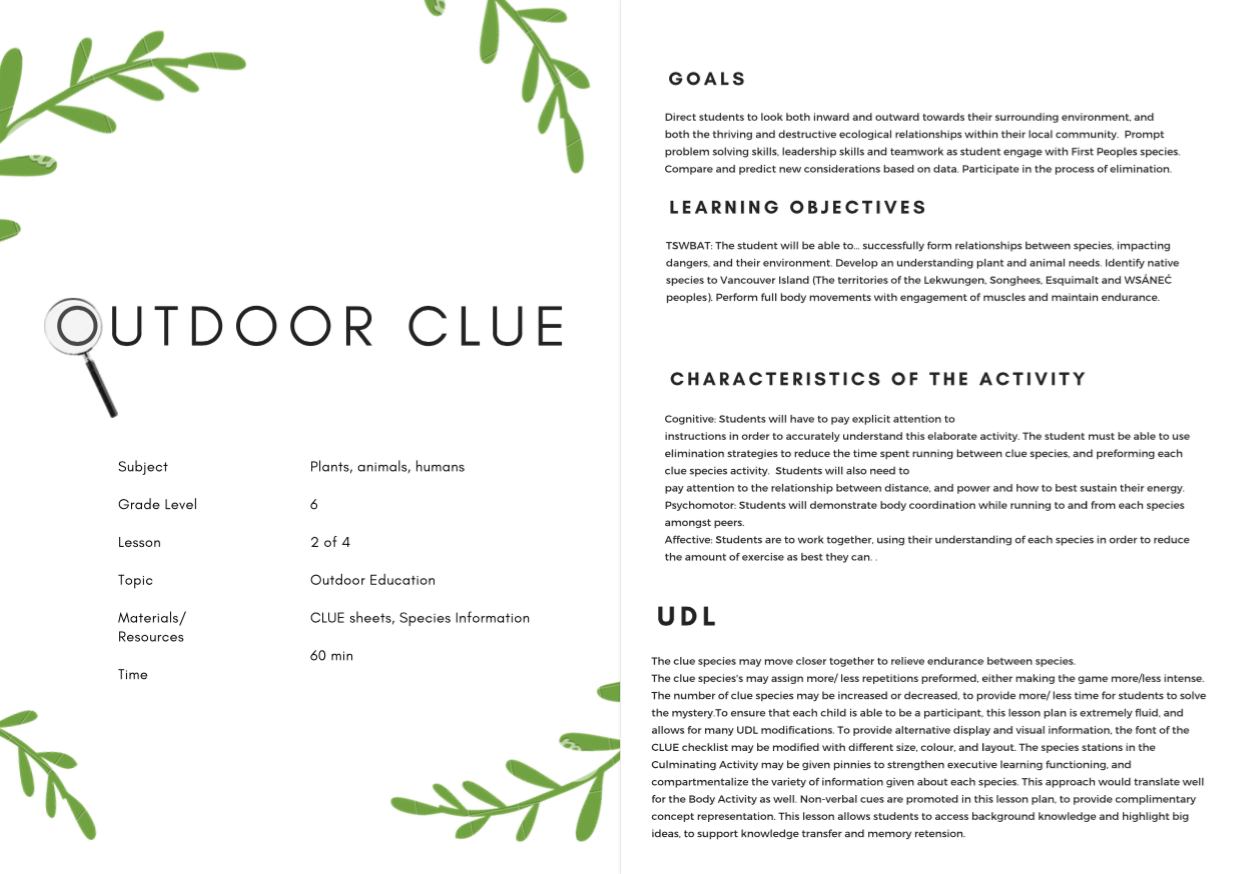EPHE 311 Peer Teaching Assignment: Outdoor Education
Lauren Neufeld, Conrad Gair
| Subject | Unlock the Ecological Sequence |
| Grade Level | Grade 5 |
| Lesson | 1 of 3 |
| Topic | Cross-curricular: Gym, Science, Social Studies, Math |
| Materials/Resources | 8 Hoola Hoops, Species Labels (bear, salal ect.) |
| Time | 15 – 30 minutes (not including time to change clothing) |
| Learning Objectives (TSWBAT) |
The student will be able to…
|
| Game Description |
| Goal: Discover the Correct Sequence of Ecology
Students will try to unlock the prescribed sequence through collective trial and error. Their goal is to reach the end of the ecological sequence. |
| Stations: Species and Movements
There are 8 stations in total and each one is inspired by a species – either a plant or animal. The Species and corresponding activity are briefly described under the diagram on page 3 of this document. In this game, there is one sequence that works and runners are trying to discover this sequence. In this case, the first station is Sword Fern, and the exercise is 10 jumping jacks that include wiggling the fingers. Once runners finish with this station, they choose (educated guess or random) from any of the other stations, in hopes that it is the next one in the sequence. |
| Runners and Sequence: Guessing and Learning – Communication Key
Runners are uncertain of the sequence and are guessing all stations after the first one. The idea is that most runners guess the following stations wrong, but when someone guesses the right one, everybody knows what it is, and as they start from the beginning, they can go further through the sequence than before. Runners are encouraged to share their findings. Collectively, they will figure out the entire sequence through trial and error. |
| Volunteers: Telling Runners Whether or not They Chose Right
Volunteers play an important role in this game, though the role is relatively simple. It is to tell the students if they guessed correctly in choosing their activity. The volunteers don’t need to know the whole sequence in order to do their jobs. They only need to know what station comes before theirs, then when they see runners come from there, and after they do the exercise, they can tell them they have chosen correctly or incorrectly with a “thumbs up” or “thumb-to-the-side” (not down for encouragement of good movement.) Volunteers can (should be) cycled out of their policing job, even though they may know more of the sequence than when their peers started, but there will likely be uncertainty still. When rotating with a peer, they give them the card, show them the proper movement and then tell them which station comes before the one they are occupying. |
| Finishing the Game: Everyone has Discovered the Sequence.
Once everyone has completed the sequences, the facilitator can decide, if children are still full of energy, that the sequence can be done once more, with everyone. If not, a summary of the relationships can be provided in the sharing of the short story below |
| Sequence Story
“ One day, in the ancient Great Bear Rainforest, A sword fern was shaking its spores all over the place. And those reproductive cells landed on the forest floor; the humus. The Humus absorbs the spores and provides a fertile beginning for new ferns as it bio-degrades other forest material, which become nutrients for the tall cedar. The cedar provides a home for the racoon, who is a source of warm clothing for the local people. The people are sustained by hunting and eating deer, who seek the salal leaves to help heal open wounds they receive after an encounter with their pursuers. The salal produces delicious berries that the bear loves to eat, and they can eat thousands of berries, especially before hibernation. The bear lies down and sleeps for months at a time, until spring time.” |
Diagram and Exercises
Exercises
1 – Sword Fern – Spore Dance (10 jumping jacks with active fingers)
2 – Humus – Decomposition (10 lateral dead bugs)
3 – Cedar – Vertical Growth ( 5 Full Squats to Reach)
4 – Beaver – Tree Drag (walk to cedar and crawl back with engaged muscles)
5 – Humans – Human knot (wait for 4 others before starting)
6 – Deer – Grazing (5 push-ups pretending to graze)
7 – Salal – Berry Picking (10 lunge steps)
8 – Bear – Hibernation (child’s pose)
| Characteristics of Activity |
| Cognitive: Students will also need to pay attention to the elimination process of which species they have tried, and which species are still options.
There are characteristics between the distance between each station to run, and the intensity of each activity at each species’ station. One activity in particular, requires more than one individual, and allows for a reliance of community to finish the task, rather than an individual task. While waiting for this task to be completed, other students will have time to catch up to this species’ activity. Furthermore, students will have to choose to communicate and listen to one another, and view their own, and each other’s shortcomings as steps closer to unlocking the ecological sequence. Psychomotor: Students will demonstrate body coordination as they change decisions between direction choice, and navigate amongst one another. Affective: Students are to work together, using their shortcomings as learning lessons that give constructive feedback for everyone. |
| Dialogue: | Objective | CC and FPPL |
| “ Good ______ class, what time is it right now?”
… It is gym time, but we are also going to have some storytime… We are travelling to the Great Bear Rainforest and we are meeting 8 species, and learning how they are all connected; how each plant and animal relies on one another! Are you ready??” |
Hook | • First Peoples traditional practices
• Ecological knowledge related to activities in the local environment |
| Most of you will be “runners” and what runners do is try to discover the hidden order of how these species are related… | Students listen to the story and grasp that there are relations between each species. | |
| In front of the class, introduce the species card, pick a volunteer, and show the movement for each station. Whisper the predecessor species to the volunteer before they leave. Ex: with salal, the species to tell the volunteer would be “Deer.”
“In this ecosystem, the species we have are: The sword fern, bear, humus, beaver, deer, salal, cedar, and humans… Volunteers will be in their hoola hoops, representing a species. As Runners, your job is to discover the order. The sword fern is the first species in the sequence, your job is to guess the next species. So after the first station, you go to another and do the movement exercise and then the volunteer will tell you if you continue to the next, because you chose right, or if you go back to the sword fern to try again. Remember, you are a team and you can learn from your fellow runners what the sequence is. |
Explain the Species and Movements – Select volunteers for each Species.
May hand them hoola hoops to distinguish them from peers as a “species”. Explain that when they guess wrong they go back to the beginning and when they guess right they proceed. |
• First Peoples traditional practices
• Ecological knowledge related to activities in the local environment • Demonstrate awareness of cultural and place-based sensitivities regarding the use of the environment • Collaborate with others in a variety of outdoor activities • Monitor exertion levels and energy levels during outdoor activities • Understand their strengths and areas for growth • Use applicable communication skills when interacting with others |
| “ If you are at the wrong species… you go back to do the Sword Fern exercise and then you get to try again!
If you’re at the next species in the story… you may communicate with your friends where to go!” Any questions? |
Each station has an activity students must do in order to reveal which species they are at. | |
| Debrief
“So we learned that each species in the great bear rainforest relies on other species to survive. When we go outside next, let’s see if we can find other ways the species we learned about today rely on their environments. It is likely that each of the species we introduced today relate to every other species. That is at least 28 relationships. For this game there are so many different sequences we could do – we could – theoretically – create the sequence in 40320 different ways – and that’s only using these 8 species.”
|
Talk about the connectedness of the species and how they are all dependent and inter-related to one another.
Cross-curricular connection to math. Students may give examples of how sequence could be more complex in Nature. |
• Demonstrate awareness of cultural and place-based sensitivities regarding the use of the environment
• Explain how developing the role of environmental awareness and stewardship in outdoor recreation and conservation • Strategies for adapting and responding to changing conditions and emergencies Social responsibility • Plan and implement ways to reduce potential impacts of outdoor activities on the local environment. |
| UDL AND POSSIBLE MODIFICATIONS |
| To ensure every single student is able to participate, the progression throughout the entirety of the ecological sequence is highly scaffolded, offering students many options to use their bodies and different muscle groups.
Communication between all students is the key to ‘unlocking’ the sequence! The game has been created in a way that allows everyone to complete the sequence much easier if every student is participating and communicating. The use of a sequence between the species work as ‘stepping stones’; allowing for smooth transitions between each species’ activity. Between activities the children are running. This game does not involve partner work as all students are working diligently to try to get to the next species; being first doesn’t mean getting to the correct species, it is a game of chance. All students are guided by other student’s mistakes, therefore all students are both included, and developing their skill-set. This lesson lends enough room for the modification of speed, range, and the rate and timing of their performance. Furthermore, it provides communication skills and an inclusive learning environment so all learners have the opportunity to learn with one another. ● If students are having difficulty progressing through the relationships between the species, the teacher may lessen the amount of species, therefore shorten the length of the sequence. The teacher may lengthen the lesson to challenge the students when needed. ● The teacher may revisit plant/ animal relationships that have already been introduced prior to this lesson. ● The teacher may also use species and relationships familiar to the students, ex). Mosquito, spider, bird or grass, bunny, wolf ● Students may be paired up if peer-support is needed, however the game is dependent on teamwork and communication. ● The teacher may allow students to collaboratively create their own ecological sequence to use for gym class. |
